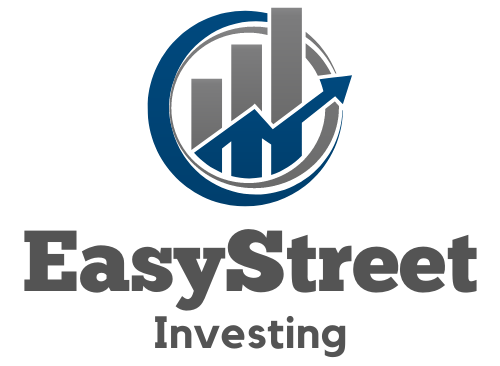In the fast-paced world of finance, savvy investors rely heavily on cutting-edge software to stay ahead. Technical analysis tools are their go-to for deciphering market trends and making informed decisions. If you’re keen on boosting your trading game, understanding the top software tools for technical analysis is a must. This article peels back the layers of complex market data, offering a clear view of the best platforms that can sharpen your investment strategies.
As we dive into the digital toolbox that traders swear by, you’ll discover software equipped with powerful indicators and intuitive interfaces. Whether you’re a beginner or a seasoned pro, there’s something in store for everyone. From charting capabilities to real-time market scans, these tools don’t just crunch numbers – they paint a picture of where the market’s headed. Stick around as we unpack the features that make each tool stand out and how they can transform your approach to technical analysis. Let’s get down to business and explore what could be your secret weapon in navigating the financial markets.
Important Highlights
1. TradingView stands out as a leading technical analysis tool favored for its real-time data, advanced charting capabilities, and interactive financial charts. With a vast community of traders, the platform facilitates idea sharing and strategy discussions, which can significantly aid in making informed trading decisions. Its user-friendly interface makes it accessible for both novice and seasoned investors.
2. MetaTrader, primarily known for its use in forex trading, is praised for its algorithmic trading features. Users can leverage Expert Advisors (EAs) to automate their trading strategies, enabling trades to be executed faster than manual operations could allow. The software’s robust environment also supports backtesting strategies against historical data.
3. When it comes to stock analysis, Thinkorswim by TD Ameritrade offers a comprehensive suite of tools that cater to various aspects of market research and strategy development. It provides real-time data, customizable screeners, and numerous technical indicators that empower traders with a thorough understanding of market behaviors.
4. For individuals seeking an integrated approach to portfolio management and technical analysis, Bloomberg Terminal is the industry standard among professional traders and financial analysts. Though costly, it delivers unparalleled access to global data, exhaustive research materials, and sophisticated analytics tools that are critical for high-stakes investment decisions.
5. Lastly, the innovative software tool called NinjaTrader offers an intuitive platform with excellent automation options. It’s equipped with simulation tools that enable traders to test strategies using hypothetical situations before applying them in live markets—an invaluable feature for mitigating risk while experimenting with new tactics or learning the ropes of technical trading.
Essential Features of Technical Analysis Tools
When selecting a software tool for technical analysis, consider the availability of advanced charting features. These include a variety of chart types, like candlestick and Renko charts, which are crucial for spotting market trends. Real-time data streaming is another pivotal feature enabling traders to make timely decisions based on the most current market information.
Another must-have is a wide array of technical indicators, such as moving averages, RSI, and Bollinger Bands. Customizability is also key; being able to tailor dashboards and setups helps analysts work more efficiently. Additionally, backtesting capabilities allow users to test trading strategies against historical data before applying them in live markets.
Leading Software Tools in the Market
TradingView stands out among technical analysis tools for its powerful yet user-friendly interface. It caters to both novice and professional traders with its collaborative community and cloud-based setup. MetaTrader, particularly versions 4 and 5, offers robust automation capabilities through its Expert Advisors (EA) feature for algorithmic trading.
Thinkorswim by TD Ameritrade is renowned for its comprehensive suite of analytical tools that accommodate options trading. NinjaTrader provides an excellent platform for futures trading with advanced charting and strategy development features. Lastly, StockCharts.com is highly regarded for its sharp charting capabilities and user engagement through public chart lists and forums.
Incorporating AI and Machine Learning
The integration of artificial intelligence (AI) and machine learning into technical analysis tools significantly enhances their predictive power. AI-driven platforms can analyze large datasets rapidly to identify patterns that may not be evident to human analysts. For instance, TrendSpider uses automated technical analysis to help traders spot trends more quickly.
Machine learning algorithms adapt over time, improving their accuracy with each analysis. This capability enables software like QuantShare to perform complex quantitative analyses that refine investment strategies continuously.
User Experience and Accessibility
An intuitive user interface (UI) greatly impacts the effectiveness of a technical analysis tool. The ease with which users can navigate platforms, access key features, and execute trades plays a critical role in their overall experience. Cloud-based solutions offer the convenience of accessibility across devices — a significant advantage in today’s mobile-first world.
Security should never be overlooked; robust encryption methods are essential to protect sensitive financial data from cyber threats. Two-factor authentication (2FA) has become a standard security measure amongst top-tier platforms like Bloomberg Terminal.
Integration with Brokerage Services
The ability to integrate seamlessly with brokerage accounts allows investors to act on their technical analysis without delay. Platforms offering direct trade execution capabilities streamline the process from analysis to action, exemplified by systems like Interactive Brokers’ Trader Workstation (TWS).
Synchronization with multiple brokerage accounts is another valuable feature that broadens trading opportunities and centralizes portfolio management within one system.
Pricing Structures Suitable for Various Users
Diverse pricing models cater to different users’ needs ranging from free versions with basic functionalities ideal for beginners to premium subscriptions offering sophisticated features for seasoned professionals. Many tools offer tiered pricing structures or add-ons so users can customize their experience based on their budget and requirements.
Educational Resources and Community Support
Beyond software capabilities, access to educational resources aids in developing analytical skills. Webinars, tutorials, and articles provided by platforms like eSignal complement the toolset by educating users on best practices in technical analysis.
A strong community support network can be invaluable; forums and discussion boards enable users to learn from shared experiences, enhancing their understanding of market dynamics.
Making the Most Out of Mobile Apps
In today’s fast-paced trading environment, mobile apps have become an extension of desktop platforms allowing traders to monitor markets on-the-go. Quality mobile apps should offer comprehensive functionality without compromising on speed or usability ensuring continuous connectivity with market movements.
- What are some tips for leveraging top software tools for optimal technical analysis?
- Select a tool that matches your specific trading style — whether it’s stocks, forex, or futures.
- Take advantage of trial periods or free versions before committing financially to a particular platform.
- Familiarize yourself with all available features; you might find useful functions you hadn’t considered initially.
- Regularly use educational materials available through your chosen tool to keep up-to-date with new strategies or updates.
- Leverage community insights by participating in forums or online groups related to your software tool.
- Incorporate mobile app usage into your routine for real-time alerts and chart monitoring when away from your desk.
- Maintain security practices such as regular password updates and enabling 2FA where available.
- Benchmark various tools simultaneously during trials to identify which offers the best combination of data accuracy, usability, and support for your needs.
Frequently Asked Questions
What are the best software tools for beginners in technical analysis?
For those just starting out, look for tools that offer user-friendly interfaces and comprehensive tutorials. MetaTrader and TradingView are popular choices, providing intuitive platforms with plenty of educational resources.
Can I get reliable free technical analysis software?
Absolutely! Many platforms offer free versions with essential features, such as finviz or StockCharts. While they may lack some advanced functionalities, they’re a solid starting point for novices.
What features should I prioritize in technical analysis software?
Focus on software offering real-time data, a variety of charting tools, and the ability to customize indicators. This will ensure you have a robust platform for your analysis.
Is it worth paying for premium technical analysis tools?
If you are serious about trading, investing in premium tools can be worthwhile. They often include more sophisticated analysis features, better support, and more timely data which can give you an edge in the market.
How do mobile apps compare to desktop software for technical analysis?
Mobile apps provide convenience but might lack the full range of capabilities. Desktop platforms typically offer more detailed analysis tools and are better suited for in-depth research.
Do these tools also cater to cryptocurrency markets?
Yes, many modern technical analysis software solutions now incorporate cryptocurrency markets alongside traditional ones. Make sure the tool you choose supports the assets you’re interested in.
Is customer support important when choosing a software tool?
Certainly! Good customer support can be crucial, especially when dealing with complex analyses or troubleshooting issues with the software.
How frequently should I update my technical analysis software?
Stay current with updates as they often bring improved functionality, new features, and security patches. Regular updates keep your analyses accurate and secure.
Are there any community-driven technical analysis tools?
Yes, some platforms like TradingView have a strong community aspect where users share insights and strategies. This can be incredibly valuable for learning and improving your own techniques.
Can I integrate external data into my technical analysis tool?
Many advanced tools allow you to import external data sets for more personalized analysis. Check if your chosen platform has this capability if it’s important to your strategy.
Closing Thoughts on Technical Analysis Software Tools
In conclusion, selecting the right software is pivotal to succeeding in technical analysis. Whether you opt for simplicity or advanced capabilities, ensure the tool meets your specific needs and skill level. Remember that while the right tools can significantly enhance your analyses, they’re most effective when paired with knowledge and experience in market patterns and trading strategies.
The landscape of technical analysis software is ever-evolving; therefore, staying informed about updates and new releases is vital. Embrace communities around these platforms for shared wisdom and never underestimate the value of robust customer support from your chosen provider. With the proper toolset at your disposal, you’re well-equipped to tackle the financial markets with confidence.

